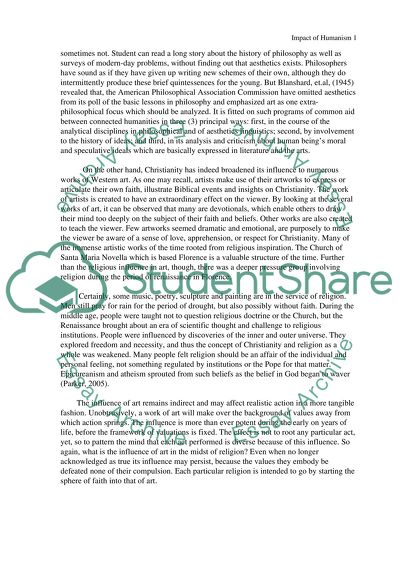Humanism and religion in the Medieval Era Essay Example | Topics and Well Written Essays - 500 words. Retrieved from https://studentshare.org/religion-and-theology/1524730-humanism-and-religion-in-the-medieval-era
Humanism and Religion in the Medieval Era Essay Example | Topics and Well Written Essays - 500 Words. https://studentshare.org/religion-and-theology/1524730-humanism-and-religion-in-the-medieval-era.


